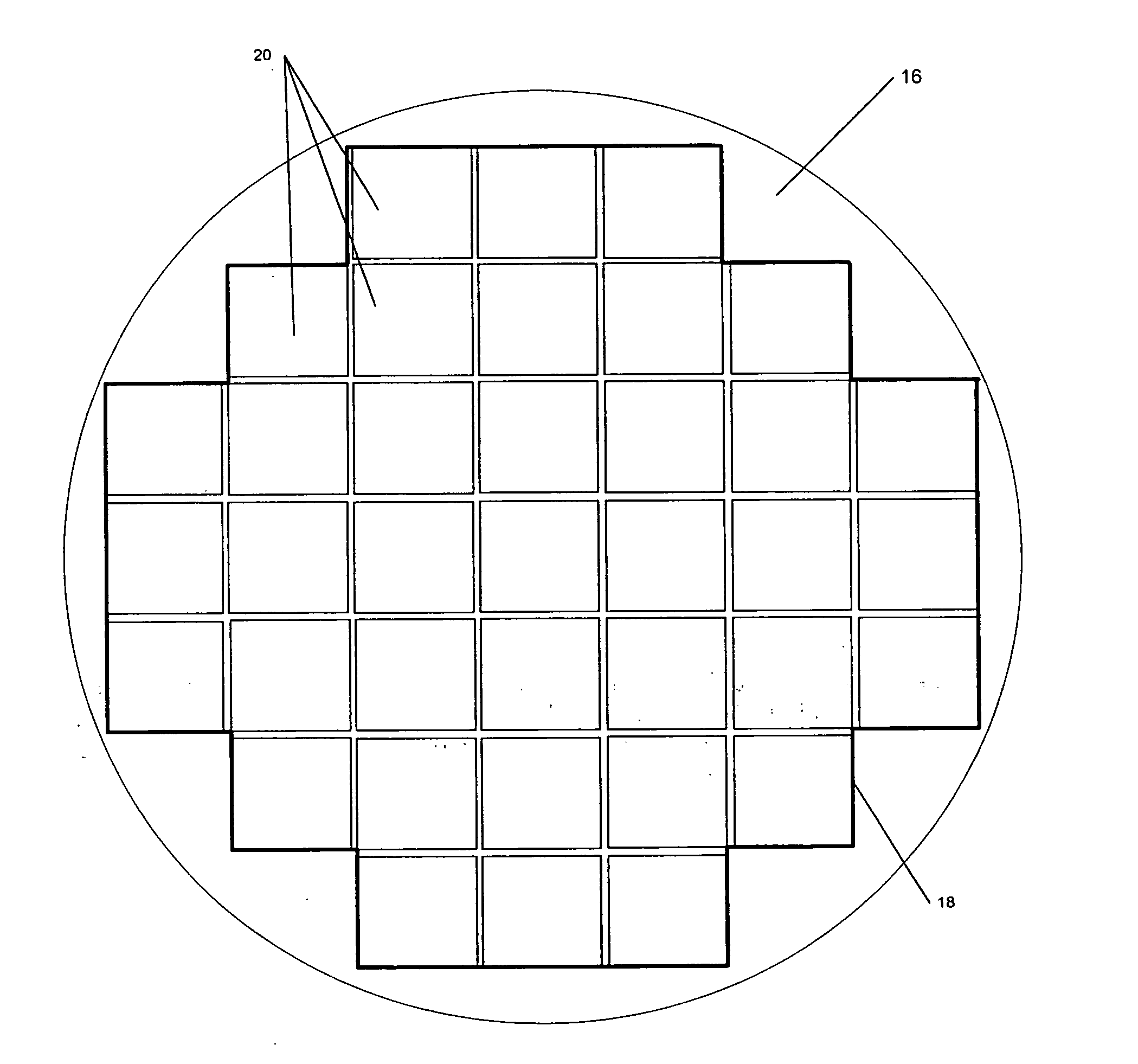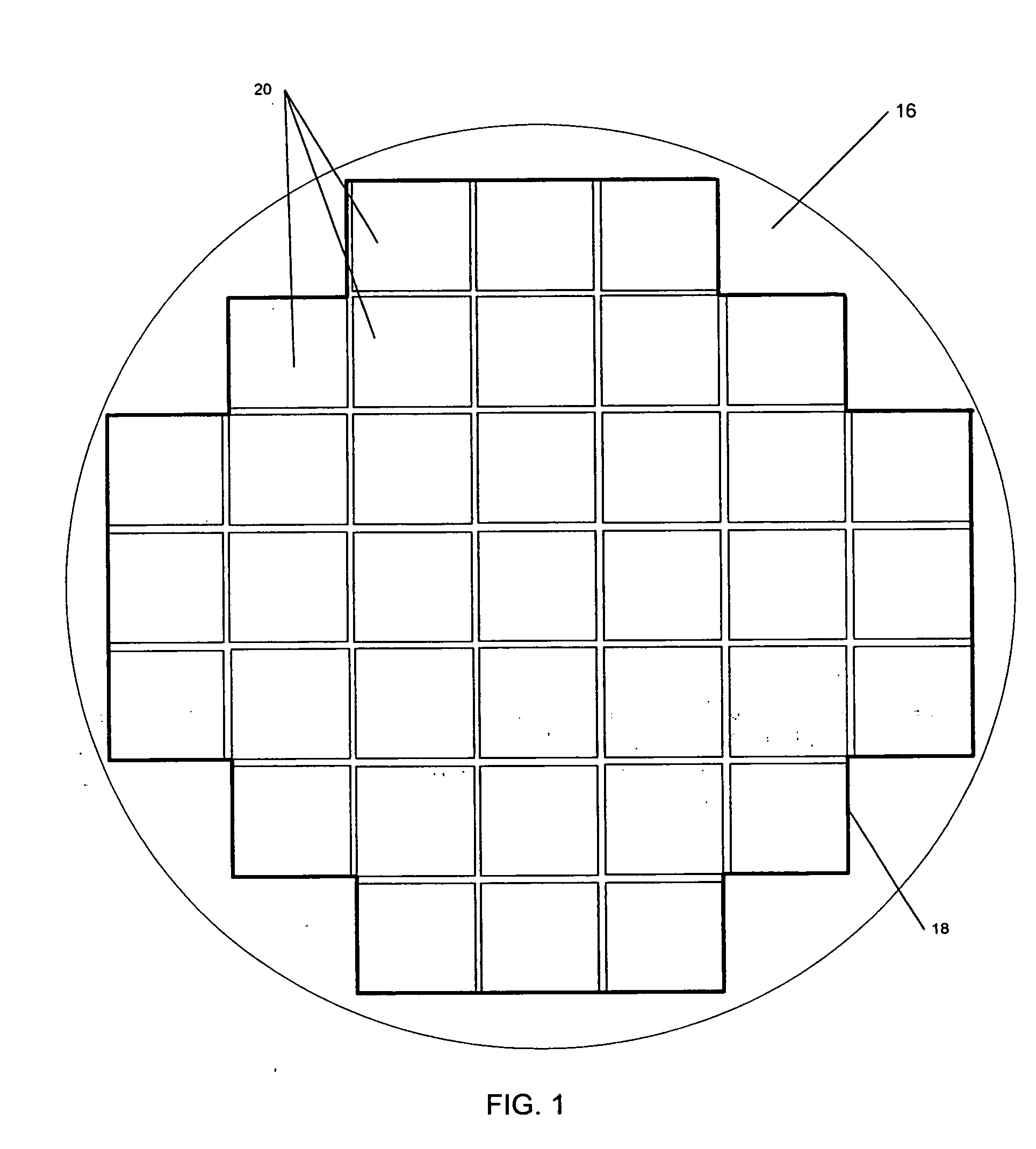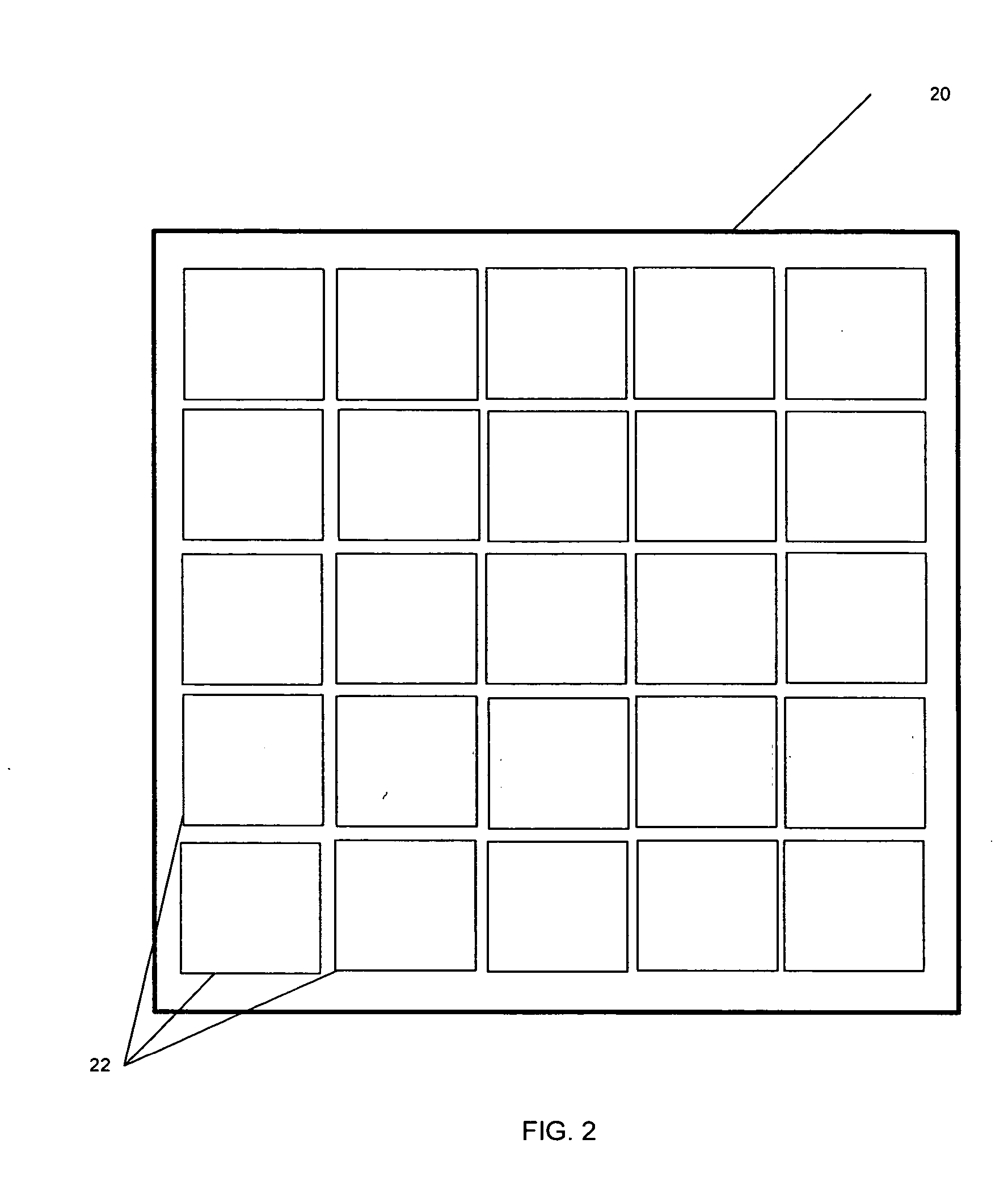Imprint alignment method, system, and template
a technology of imprint alignment and template, applied in the field of imprint alignment method, system, and template, can solve the problems of inability to properly align the subsequent imprint lithography device layer, and inability to meet the needs of use, and achieve the effect of partial utility
- Summary
- Abstract
- Description
- Claims
- Application Information
AI Technical Summary
Benefits of technology
Problems solved by technology
Method used
Image
Examples
Embodiment Construction
[0019] Although an imprint lithography system may have a high degree of alignment accuracy, the alignment precision may not suffice for multi-layered devices having sub 100 nm features. Using typical lithography methods, systems, and devices, a system having a three sigma alignment accuracy of less than about 500 nm may not be sufficient to produce functional, multi-layered devices having, for example, registration tolerances of about 25 nm or less, and having minimum feature sizes of, for example, about 50 nm or less. An exemplary lithographic system is available under the trade name IMPRIO 100™ from Molecular Imprints, Inc. having a place of business at 1807-C Braker Lane, Suite 100, Austin, Tex. 78758. The system description for the IMPRIO 100™ is available at www.molecularimprints.com and is incorporated herein by reference.
[0020] Typically all the layers within a respective print field are replicated substantially identically, resulting in substantially identical devices withi...
PUM
| Property | Measurement | Unit |
|---|---|---|
| feature sizes | aaaaa | aaaaa |
| size | aaaaa | aaaaa |
| sizes | aaaaa | aaaaa |
Abstract
Description
Claims
Application Information
 Login to View More
Login to View More - R&D
- Intellectual Property
- Life Sciences
- Materials
- Tech Scout
- Unparalleled Data Quality
- Higher Quality Content
- 60% Fewer Hallucinations
Browse by: Latest US Patents, China's latest patents, Technical Efficacy Thesaurus, Application Domain, Technology Topic, Popular Technical Reports.
© 2025 PatSnap. All rights reserved.Legal|Privacy policy|Modern Slavery Act Transparency Statement|Sitemap|About US| Contact US: help@patsnap.com



